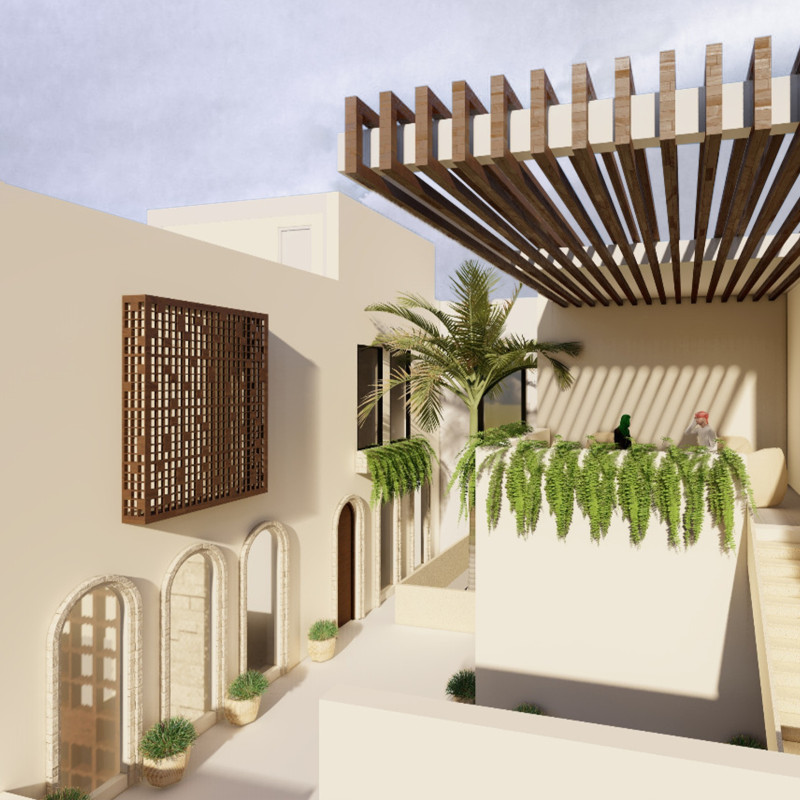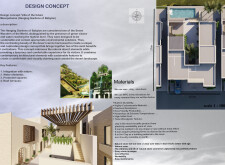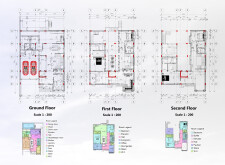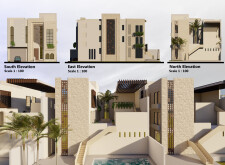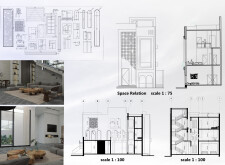5 key facts about this project
## Concept Overview
This project presents a modern villa that draws inspiration from the historical Hanging Gardens of Babylon, renowned as one of the Seven Wonders of the Ancient World. The design seeks to integrate natural elements with sustainable architectural practices, carefully addressing the challenges posed by a desert climate. By incorporating aesthetic and ecological principles from ancient Mesopotamian architecture, the project aims to foster a symbiotic relationship between the built environment and nature.
## Spatial Integration
The villa emphasizes extensive greenery through living walls and courtyards, promoting biodiversity and ecological balance. Centralized protected squares are designed as communal gathering spaces, enhancing social interaction while providing refuge from the sun. Multiple roof terraces create additional outdoor areas, offering valuable green space while affording views of the surrounding landscape. Water features, such as pools and fountains, not only serve as visual focal points but also play a critical role in regulating the microclimate, ensuring comfort in warmer temperatures.
## Material Selection
The choice of materials reflects a commitment to sustainability while enhancing the overall aesthetic of the villa. Wood Plastic Composite (WPC) is utilized for façade elements due to its durability and low maintenance requirements. Clay, a natural and versatile building material, contributes to temperature regulation and humidity control. Natural stone is selected for its strength and local availability, providing a unique character to the design while minimizing environmental impact. Each material supports the project's goals of ecological harmony and resilience.


